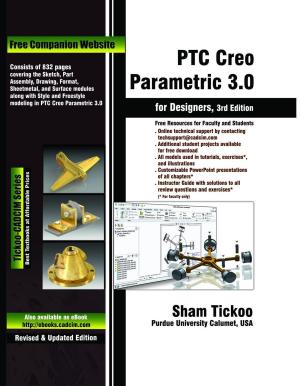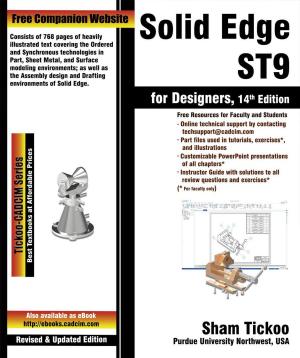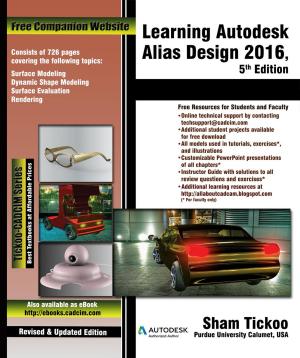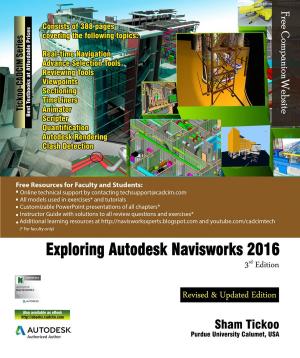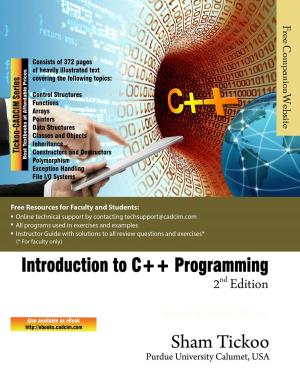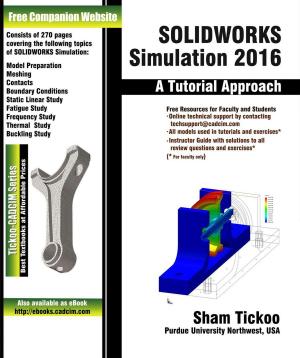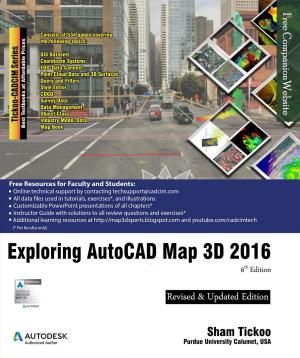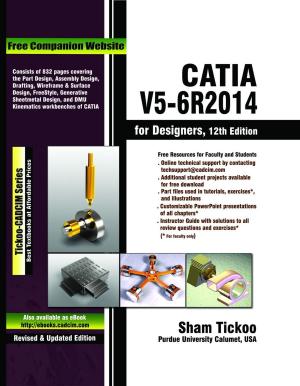| Author: | Prof Sham Tickoo | ISBN: | 9781386222200 |
| Publisher: | CADCIM Technologies | Publication: | August 31, 2017 |
| Imprint: | Language: | English |
| Author: | Prof Sham Tickoo |
| ISBN: | 9781386222200 |
| Publisher: | CADCIM Technologies |
| Publication: | August 31, 2017 |
| Imprint: | |
| Language: | English |
The NX 9.0 for Designers textbook has been written with the intention of helping the readers effectively use the solid modeling tools in NX. The mechanical engineering industry examples and tutorials used in this book ensure that the users can relate the knowledge of this book with the actual mechanical industry designs. The main features of this textbook are as follows:
• Tutorial Approach
The author has adopted the tutorial point-of-view and the learn-by-doing theme throughout the textbook. This approach guides the users through the process of creating the models in the tutorials.
• Real-World Projects as Tutorials
The author has used about 50 real-world mechanical engineering projects as tutorials in this book. This enables the readers to relate the tutorials to the models in the mechanical engineering industry. In addition, there are about 32 exercises that are also based on the real-world mechanical engineering projects.
• Tips and Notes
The additional information related to various topics is provided to the users in the form of tips and notes.
• Learning Objectives
The first page of every chapter summarizes the topics that are covered in that chapter.
• Self-Evaluation Test, Review Questions, and Exercises
Every chapter ends with a Self-Evaluation Test so that the users can assess their knowledge of the chapter. The answers to the Self-Evaluation test are given at the end of the chapter. Also, the Review Questions and Exercises are given at the end of each chapter and they can be used by the Instructors as test questions and exercises.
• Heavily Illustrated Text
The text in this book is heavily illustrated with about 1100 line diagrams and screen capture images.
The NX 9.0 for Designers textbook has been written with the intention of helping the readers effectively use the solid modeling tools in NX. The mechanical engineering industry examples and tutorials used in this book ensure that the users can relate the knowledge of this book with the actual mechanical industry designs. The main features of this textbook are as follows:
• Tutorial Approach
The author has adopted the tutorial point-of-view and the learn-by-doing theme throughout the textbook. This approach guides the users through the process of creating the models in the tutorials.
• Real-World Projects as Tutorials
The author has used about 50 real-world mechanical engineering projects as tutorials in this book. This enables the readers to relate the tutorials to the models in the mechanical engineering industry. In addition, there are about 32 exercises that are also based on the real-world mechanical engineering projects.
• Tips and Notes
The additional information related to various topics is provided to the users in the form of tips and notes.
• Learning Objectives
The first page of every chapter summarizes the topics that are covered in that chapter.
• Self-Evaluation Test, Review Questions, and Exercises
Every chapter ends with a Self-Evaluation Test so that the users can assess their knowledge of the chapter. The answers to the Self-Evaluation test are given at the end of the chapter. Also, the Review Questions and Exercises are given at the end of each chapter and they can be used by the Instructors as test questions and exercises.
• Heavily Illustrated Text
The text in this book is heavily illustrated with about 1100 line diagrams and screen capture images.


